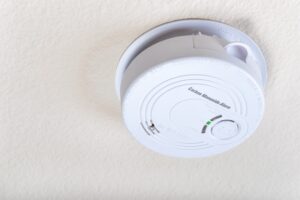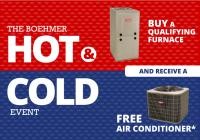
Carbon monoxide is a tasteless, odorless, and invisible gas that can enter a home by way of a damaged or malfunctioning gas-powered appliance. Since many of our customers utilize a gas furnace in their households, we feel that it’s important to cover the risks of carbon monoxide (CO) exposure and what can be done to prevent this exposure.
First, we want to start by saying that gas-powered furnaces and other gas-powered appliances are not inherently dangerous. But if they are not installed and cared for properly, they can become so. Preventing problems with carbon monoxide exposure is simple… read on to learn more!
What Is Carbon Monoxide?
As we alluded to above, carbon monoxide is not a gas you can just detect on your own. It’s odorless and tasteless, and there is no vapor left behind by it. Therefore, it can be a bit insidious. CO exposure, or more importantly CO poisoning, is responsible for thousands of incidents in the US each year, with the least severe CO poisoning causing headaches and dizziness, and the most severe even leading to fatalities.
Prevention Tools
The first, and most important prevention tool you can have against carbon monoxide exposure is a carbon monoxide detector. You can’t see or smell this gas on your own, but a CO detector will alert you to whether there is too much in your home.
In most jurisdictions, it’s now required that all homes with gas-powered appliances have CO detectors installed. If you don’t currently have one, you can obtain one from your local hardware store, or you may even be able to get one from your local fire department. Be sure to ask our team for recommendations for your local neighborhood!
The second prevention tool is to maintain your gas-powered appliances! This is where we come in. We provide expert furnace services, including comprehensive maintenance. Annual furnace maintenance allows us to check each component of your system to ensure it’s functioning properly, and safely. One component, in particular, we look at is the heat exchanger, which is the most relevant part when discussing carbon monoxide.
What Is the Furnace Heat Exchanger?
This component is the part of your furnace tasked with actually heating up the air that travels through the system’s ventilation system and into your living space. When the burners of the furnace ignite, they produce hot combustion gas that gets collected inside the heat exchanger–carbon monoxide. The heat exchanger component looks like a metal, tube-like chamber.
Over the years, the heat exchanger expands and contracts thousands of times as the combustion gases heat it up and then as it cools down once the furnace finished a heating cycle. As a result, the heat exchanger can develop very small fissures and cracks in it. This is when carbon monoxide seeps out and can enter your living space.
Furnace maintenance helps us ensure that your heat exchanger stays in great shape, and professional installation ensures that it was in great shape, to begin with!
When you need service done on a gas-powered appliance such as your Pittsburgh furnace, you want an experienced team to handle the job. Call the friendly staff at Boehmer Heating & Cooling for exceptional customer service!


